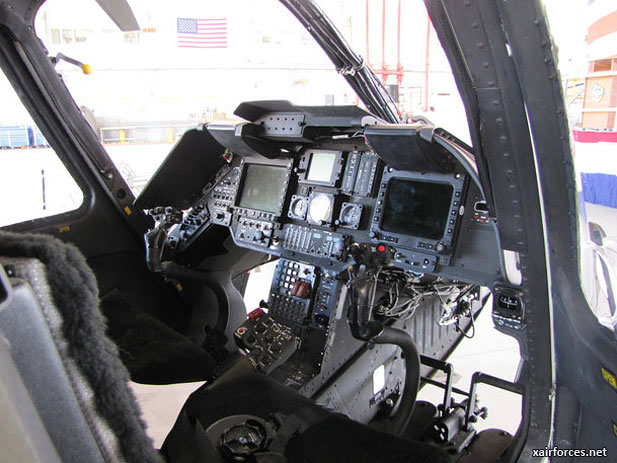
U.S. Army near decision on holding helicopter competition

The U.S. Army is nearing a decision on whether to open a competition for a new scout helicopter to supplant the current fleet of Kiowa Warriors made by Bell Helicopter.
Military officials have been testing different choppers this year, including models from Boeing and EADS, in a "skyoff" acquisition strategy as it weighs whether to move forward with planned upgrades to the Vietnam-era Kiowa or seek a new model.
"No decision has been made," Army spokeswoman Sofia C. Bledsoe said.
Bledsoe acknowledged, however, that officials are assessing results from the voluntary flight demonstrations to determine whether to call a competition. The analysis of flight results will become part of a recommendation to an Army acquisition board that will "help define the acquisition path ahead," Bledsoe said.
If it calls for a competition, the Army won't make it public until early 2013, industry officials have been told.
The Army's goal is to acquire an affordable aircraft that is equipped to handle the high altitudes and hot temps of the Afghanistan mountains.
For more than 40 years, it has relied on the Kiowa Warrior, because of its endurance and affordability. The Kiowa "outperforms" in its hundreds of thousands of combat hours and readiness capability, the Army says.
"If you ask somebody on the ground what they want to see, they want to see a Kiowa Warrior in the air," said Mike Miller, head of Bell Helicopter's business development programs and one of the armed Kiowa's first test pilots. "It's a great aircraft."
Bell, based in Fort Worth, is producing new metal cabins to upgrade the Kiowas with the 21st century bells and whistles necessary to meet the Army's mission requirements. In order to meet demand for a helicopter that can fly higher in rugged terrain, Bell is proposing a more powerful engine and improved rotor and transmission. The upgraded Kiowas will also be equipped with new digital flight controls, color video and a laser targeting system.
The effort to refurbish and upgrade existing aircraft like the Kiowa may become a growing trend as the Pentagon seeks to pare down high-ticket defense acquisitions.
The Army has reportedly set aside $2 billion to overhaul the Kiowa fleet. At the same time, it began exploring other options by issuing a request for information that kicked off the skyoffs. Bottom line: Can anyone produce a better helicopter that costs less than upgrading the Kiowa?
A number of industry leaders say they can.
In October 2012, Boeing unveiled its AH-6 helicopter to the Army in Mesa, Ariz., said Mike Burke, Boeing's director of business development for attack helicopters.
"There is value in moving forward to a competition," Burke said.
Also in the fall, EADS North America showed off three prototype aircraft in a Colorado-based flight demonstration to the Army. It could easily develop an armed derivative of the company's Lakota helicopter, said James Darcy, spokesman for EADS North America. The Army already owns 270 Lakotas.
AgustaWestland, an Italian-based company with offices in Arlington, also presented an aircraft to the Army at its Philadelphia facility in the summer, said Paul Elliott, vice president for Army programs at AgustaWestland.
"I suspect ... that nobody has an aircraft completely ready to go but we do anticipate an aircraft," he said.
But if the Army releases a request for proposal, "we have every reason to expect we will favorably compete," Elliott said.
Officials say the Army needs to boost its fleet from about 330 to 368 aircraft.
Source: star-telegram.com - 30 December 2012
Photo: The U.S. Army Kiowa Warrior is a single-engine, two-seat reconnaissance and direct-fire support aircraft. It has logged more than 800,000 combat hours between Iraq and Afghanistan, where it battles in snow, sand and high altitudes. It provides ground commanders with battle information and sometimes a seat from which to direct battles in the air. The helicopters are equipped with machine guns and missiles, and can carry sensors on masts installed above their rotor blades. (Photo by U.S. Army/Sofia Bledsoe)
(30.12.2012)
|